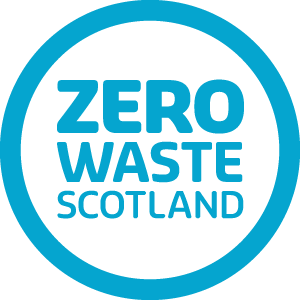
Importance of data
Data has so many uses in tackling litter and you can help!
Data gives us more information on how much litter there is, where it is and what it is made up of, meaning we are more informed when trying to tackle it.
Data collection by volunteers is sometimes known as citizen science. You should need little to no training or prior knowledge, meaning anyone can get involved.
Here are SIX uses of all that data:
1. In policy
Data collected by volunteers has already been used for influencing policy!
This data is used in consultations and reports with evidence of policy makers already making use of this information.
Examples: The Marine Conservation Society’s data contributed to the development of the Deposit Return Scheme (DRS) and the legislation to ban the supply and manufacture of certain single-use plastic items; Trash Free Trails have used the data collected by their volunteers to advocate for DRS, and the need for it to be all-inclusive (cans, plastic and glass bottles) and Keep Scotland Beautiful used volunteer data to make the case for ground litter to be included in environmental regulations on packaging.
2. For local action
Data collected by volunteers is the only method of collecting very local information so you could monitor what is happening in your community.
National datasets are good at understanding the national problems but can’t provide the details in each neighbourhood. By collecting data at a local level you could see what types of litter are the big problem, perhaps identify where they are coming from and the behaviours leading to litter, and see where it is happening. This can help to inform what interventions would work best.
Example 1: Data collected by a community group was used to identify and highlight local riverine litter issues, which led to the development of an Upstream Battle® intervention to monitor and highlight litter on the River Irvine.
Example 2: Data collection by a volunteer in the Netherlands located hotspots of litter and was then used by the government to strategically place bins.
3. Understand litter on different land types
Data on a range of different land types such as beaches, streets and trails tells us what items are affecting what land types. This can help to address litter and littering behaviour in these different settings and tell us a bit about where the litter is coming from. To tackle litter it is integral the sources and pathways of litter items are known. Without this, it is likely the issue will remain.
Example: Research by Keep Scotland Beautiful and local authority data tells us that smoking-related items are the most common on our streets. However, Trash Free Trails found plastic bottles were the most common item on trails and the Marine Conservation Society found plastic pieces to be the most prevalent litter item on surveyed beaches.
There are still some land types that are less surveyed, such as open spaces - can you help?
4. Identify common brands
Some datasets include information on the brands of litter in our environment, such as Surfers Against Sewage and Trash Free Trails. This information can be used to highlight the sources of litter and campaign to the companies with commonly recorded brands and hold them somewhat responsible.
5. See the scale of the problem
Data can provide insights into the scale of the problem and when collected over a number of years, it can help to identify trends and long-term changes.
Some data collection systems are international, so data immediately makes up part of a greater global picture. Keep Scotland Beautiful and the Marine Conservation Society both add marine data into Clean Swell by Ocean Conservancy, a global beach litter collection project.
Although it is widely accepted that litter, or plastic pollution, is a global problem, the sharing of data may be most relevant for the marine environment due to the oceans being a pathway of litter moving in the environment and a source of marine litter in Scotland.
Example: In 2023 survey data from the Marine Conservation Society reported an increase in the average litter items in UK beaches and 2023/24 data from Keep Scotland Beautiful’s LEAMS suggest that litter levels on streets showed improvements, both compared to the year before.
6. Raise awareness
The datasets created by volunteers allow for more promotion and engagement in litter data; it is shared with the general population as it is picked up in local and national news. Many articles on litter in the UK uses volunteer collected data, providing evidence and reason for journalists to highlight the problems.
Need any more reasons for data collection?
- It increases connection with your local community
- It's social
- It's physical exercise
- It provides new skills and knowledge
Ready to record what you see?
Look at all the ways you can input on our Data collection page.
A huge thank you to everyone who collects data to help tackle the litter emergency, none of the above can be done without you.
Further reading
The Community Litter Hub is delivered in partnership with:




